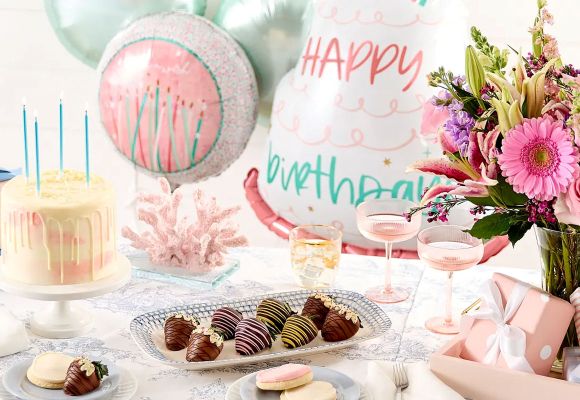Wondering how to care for your plants if you weren't born with a green thumb? You've come to the right place! Learn general plant care including best practices for watering and feeding your plants, or plant care tips for your beloved bonsai, succulents, bulbs, dish gardens, gardenias, orchids, or other house plants from our plant experts!
General Care Tips
Always slowly water your plant over a sink to avoid water damage, especially if the pot has drainage holes, and allow water to drain before returning to decorative container.
Keep plant away from drafts, excessive heat or cold, and—unless required direct sunlight.
Check water levels regularly, as directed.
Be careful not to overwater.
Be sure to protect the surface on which your plant rests.
Bonsai
Bonsai, "a plant or tree grown in a pot," has been an Asian art form for nearly 2,000 years. The shape, style and color of both the plant and container perfectly harmonize to give the amazing impression of a mature tree in miniature.
Water: Keep the soil evenly moist, but not soggy, never allowing it to dry out completely. Submerge the entire planter under water until the air bubbles have stopped, and then allow the bonsai to drain for up to one hour. Be sure to protect the surface on which your plants rest.
Light: Full to partial sun.
Bulbs
Few things are as beautiful as seeing your flowering bulbs burst into color after caring for them. From Tulips and Hyacinths to Muscari and Crocus, the colors of our fresh bulbs may vary when in full bloom. Bulb gardens may include multiple varieties which may bloom at different times and will arrive rooted and sprouted, ready to bloom.
Water: Keep soil evenly moist, but not soggy. Check moisture level daily as bulbs may take up water rapidly. Be sure to protect the surface on which your plants rest.
Light: Bright, indirect light is preferred.
Dish Garden
The art form known as dish gardens originated in China over thirteen centuries ago, greatly influenced by Buddhism's love for nature. Depending on the components, these miniature landscapes may be called foliage gardens, European gardens or cactus gardens.
Water: Keep soil constantly moist, but not soggy. Do not allow plant to sit in water for extended periods of time. Be sure to protect the surface on which your plants rest.
Light: Best in bright, indirect light or direct sun.
Flowering Plants
The same general care instructions may be followed for the beautiful blooming plants featured on this page, including Persian Violet, African Violet, Hibiscus, Mum (or Chrysanthemum), and Mini Plants. Bloom colors may vary and may arrive in bud form, ready to bloom.
Water: The soil should be kept moist but never soggy. Allow the soil to dry out slightly between waterings. Remove the plant from the decorative container each time you water to allow for drainage. Add water until it runs out the drainage holes in the bottom of the pot. To prevent the soil from becoming soggy, pour out any excess water that collects in the plastic after watering. Do not allow plant to sit in water for extended periods of time. Be sure to protect the surface on which your plants rest.
Light: Bright indirect light.
Gardenia
Native to Africa and southern Asia, the gardenia was mistakenly thought to be an American plant, and was named by botanist Carolus Linneaus after Dr. Alexander Garden, an American naturalist. Gardenia plant will arrive either blooming or in bud form, ready to bloom.
Water: Keep the soil evenly moist but never soggy. Never allow the soil to dry out completely. Remove the plant from the decorative container each time you water to allow for drainage. Add water until it runs out the drainage holes in the bottom of the pot. Be sure to protect the surface on which your plants rest.
Light: The gardenia needs very bright light for best flower and foliage growth. A location receiving bright indirect light or lightly filtered sunlight is best. If this is not possible, give it the brightest location you can and supplement the natural light with fluorescent lighting.
Care Tip!
It's natural for gardenia flowers to turn yellow; removal of these blooms will encourage additional growth.
House Plants
Studies have shown that green plants provide such health benefits as making the air cleaner and spreading good cheer with their warmth and beauty.
Water: The soil should be kept evenly moist with only the top surface of the soil drying between watering, but never allow the soil to dry out completely. Add water thoroughly until it flows out the drain holes. To prevent the soil from becoming soggy, pour out any excess water that collects in the plastic after watering. Do not allow plant to sit in water for extended periods of time. Be sure to protect the surface on which your plants rest.
Light: Bright indirect light.
Orchids
Over the centuries orchids have been a symbol of love, luxury and beauty. During the Middles Ages, they were used as remedies for illnesses, as an aphrodisiac, and as a main ingredient in certain love potions. Bloom colors on our numerous varieties of orchids may vary.
Water: Lightly water once a week, allowing the water to drain from the drainage holes of the grow pot. Never allow the plant to sit in water, as this may cause root rot. Be sure to protect the surface on which your plants rest.
Light: Bright direct or indirect sun light.
Care Tip!
The support stick that was sent with your orchid will help it to grow, so keep it bound to the plant. Once you find a place for the orchid, make it permanent. Orchids do not like to be moved around often. Also, it is natural for an orchid's roots to grow out of the bark or moss it's planted in, so don’t be alarmed.
Rose Plants
Roses have been mentioned in the earliest recorded historic writings from throughout Europe and Asia. Our fresh rose plants arrive either blooming or in bud form ready to bloom, and are available in a variety of stunning bloom colors.
Water: Rose plants need constant moisture but should never be soggy. Do not allow plant to sit in water. Remove the plant from the decorative container each time you water to allow for drainage. Add water until it runs out the drainage holes in the bottom of the pot. Be sure to protect the surface on which your plants rest.
Light: Bright light is best indoors. In the garden, full sun. Rose plants need an abundance of light to form new buds and develop tight ones. After the buds have bloomed, we suggest you take your plant outdoors and plant it in your yard; if that's not possible, transplant it to a larger container to keep outside.
Succulents
Well known for their unique look, these beautiful desert plants are available in a variety of shapes, styles, and colors. Their thick leaves store water making them very low-maintenance and perfect for indoor growing.
Water: It’s best to err on the side of caution when watering succulents; a little water goes a long way. Never mist these plants, only let water soak into their soil when it’s feeling dry.
Light: Bright direct or indirect sunlight.
![[object Object]](https://images.contentstack.io/v3/assets/bltdd99f24e8a94d536/bltbb8c50bb710161e5/6887a4821a76f50469aa0422/august-flower-bouquets-of-the-month-fy26-global-nav-banner-280x280.jpg?auto=webp) Starting at $50 >
Starting at $50 > Personalized Vases >
Personalized Vases > BRITTO® >
BRITTO® > Summer Garden Sale >
Summer Garden Sale > Cookies & Bakery >
Cookies & Bakery > Experience Gifts >
Experience Gifts > Custom Greeting Cards >
Custom Greeting Cards > Get the new book by our founder, Jim McCann >
Get the new book by our founder, Jim McCann >

















